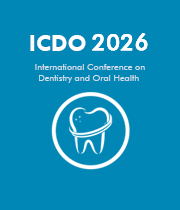Title: Passive fit of prefabricated versus conventionally constructed cobalt chromium CAD\CAM 3- unit implant supported frameworks: An invitro study
Abstract:
Aim: To evaluate the passive fit of CAD/CAM 3-unit implant supported frameworks that are constructed before and after implant placement in Kennedy Class I models.
Methodology: A sample of 5 Kennedy class I models, 2 with thin ridges and 3 with normal ridges, were restored by 20 frameworks bilaterally; 10 based on actual (group A) and 10 based on virtual (group V) implant positions. The models were imaged using cone beam computed tomography and scanned using an intraoral scanner. The STL (Standard Tessellation Language files) and the DICOM files were registered on a 3D planning software. A CAD/CAM surgical guide was planned, resin printed and used for installing the 6 implants bilaterally. In group V, the frameworks were designed based on virtual scan bodies and virtual multi-unit abutments, while in group A the design was based on actual scan bodies attached to the multi-unit abutments. Frameworks of both groups were milled using cobalt chromium and tested for passive fit using 8 clinical tests. Fisher’s Exact test was used to compare between the two groups and the subgroups of the casts. The significance level was set at P ≤ 0.05.
Results: Statistical significant difference in the passive fit of group V and group A frameworks was found (p-value=.044, OR=2.667). Regarding ridge form, no statistically significant difference was found between normal and thin ridges, whether in group V or A.
Conclusion: Within the limitations of this study, the following can be concluded that in Kennedy class I, prefabricated CAD\CAM 3-unit implant-supported frameworks exhibit similar passive fit conventionally constructed ones. Also, ridge form affects the passive fit of the frameworks designed based on virtual implant position.




